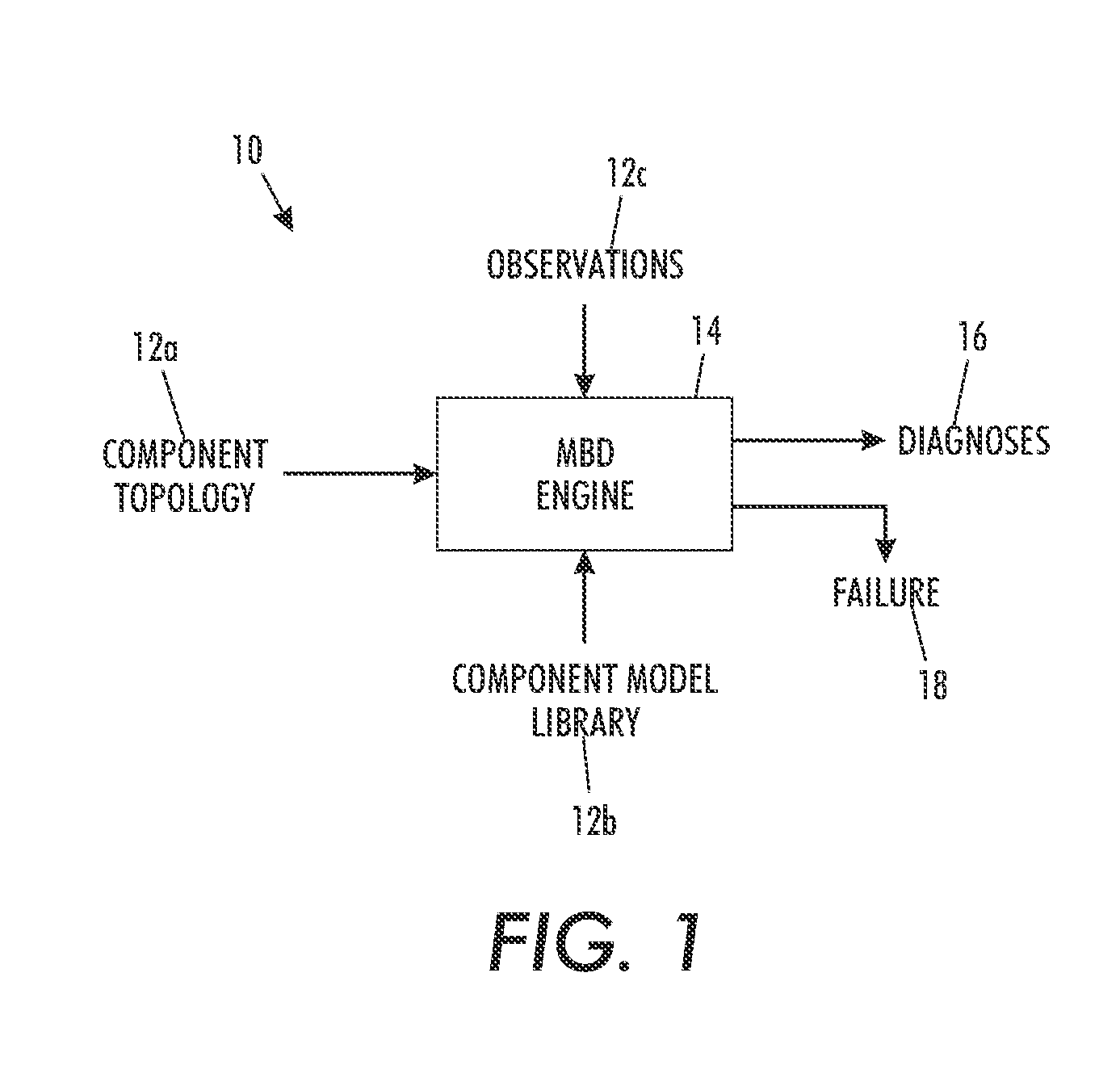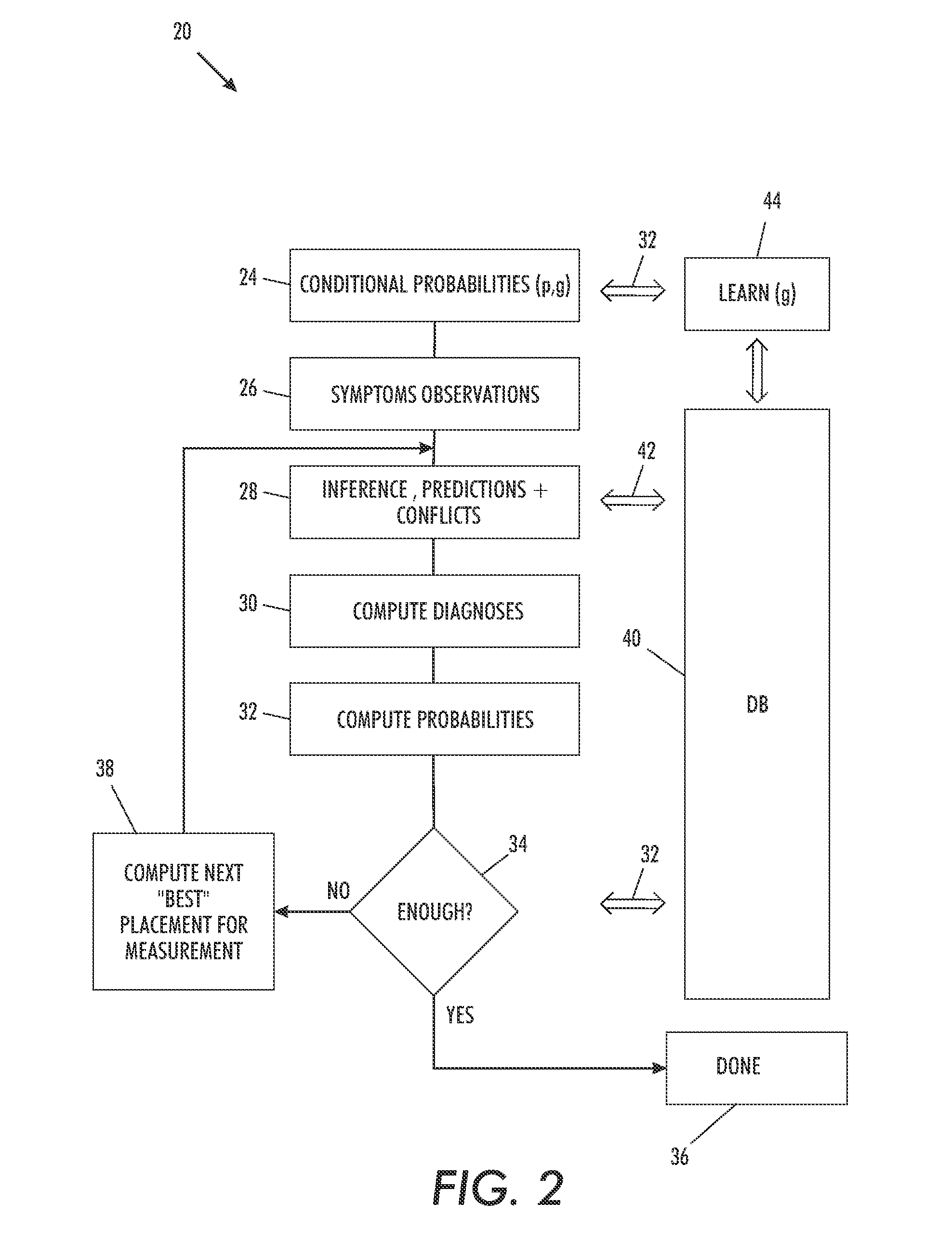Diagnosing intermittent faults
a technology of intermittent faults and faults, applied in the field of model-based testing, can solve the problems of increasing modeling complexity, inability to accurately diagnose intermittent faults, and difficulty in accurately diagnosing intermittent faults, so as to avoid increased system failures
- Summary
- Abstract
- Description
- Claims
- Application Information
AI Technical Summary
Benefits of technology
Problems solved by technology
Method used
Image
Examples
Embodiment Construction
[0024]FIG. 1 characterizes the main inputs and outputs of a model-based, component-based diagnosis (MBD) engine architecture 10. Given the component topology (e.g., the schematic for analog circuits) 12a, component models (e.g., resistors obey ohm's law) 12b and observations (e.g., the voltage across resistor R6 is 4 volts) 12c, model-based diagnosis (MBD) engine 14 computes diagnoses 16 which explain all the observations 12c. Observations inconsistent with expectations guide the discovery of diagnoses. When the model-based diagnosis (MBD) engine can find no diagnoses it signals a failure 18.
[0025]Existing model-based diagnosis (MBD) approaches presume the system being diagnosed behaves non-intermittently MBD system therefore and analyze the system's under-test behavior over a small number (often one) of time instants. The following discussion shows how existing approaches to model-based diagnosis can be extended to diagnose intermittent failures as they manifest themselves over num...
PUM
 Login to View More
Login to View More Abstract
Description
Claims
Application Information
 Login to View More
Login to View More - R&D
- Intellectual Property
- Life Sciences
- Materials
- Tech Scout
- Unparalleled Data Quality
- Higher Quality Content
- 60% Fewer Hallucinations
Browse by: Latest US Patents, China's latest patents, Technical Efficacy Thesaurus, Application Domain, Technology Topic, Popular Technical Reports.
© 2025 PatSnap. All rights reserved.Legal|Privacy policy|Modern Slavery Act Transparency Statement|Sitemap|About US| Contact US: help@patsnap.com



